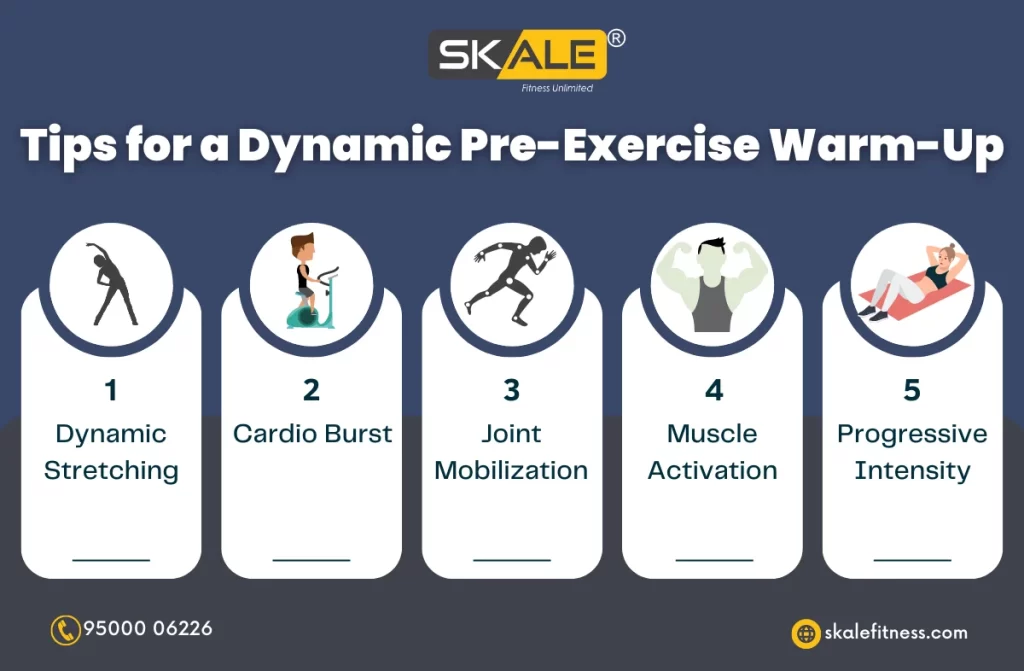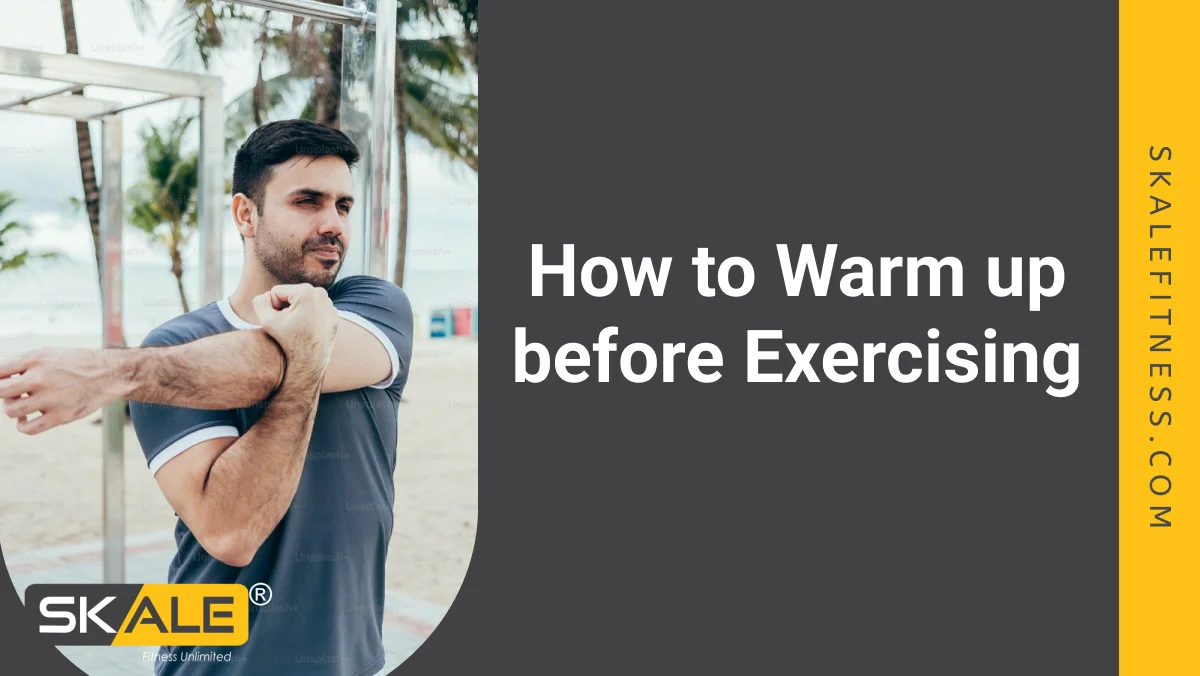Starting an exercise routine or participating in any physical activity without warming up can be detrimental to one’s performance and health. A proper warm-up can help increase heart rate, circulation, and flexibility, and prepare the body for physical activity, thus making exercise more effective and enjoyable.
In this blog, we will explore the benefits of warming up, different types of warming up, how to warm up before exercising, and why it is important to incorporate it into a regular exercise routine.

Benefits of Warming Up
If you need to know how to warm up before exercising, you should be aware of the several benefits. Warming up before exercising has numerous benefits that can impact both performance and overall health. Let’s take a closer look at how warming up can increase heart rate, circulation, and flexibility, and prepare the body for physical activity.
- Increases Heart Rate: Warming up increases heart rate, allowing for a smooth transition from rest to physical activity. A gradual increase in heart rate prepares the body for the demands of exercise, reducing the risk of sudden strain or injury.
- Improves Circulation: Warming up also improves circulation, which helps deliver oxygen and nutrients to the muscles and remove waste products. This prepares the body for physical activity and reduces the risk of injury.
- Increases Flexibility: Warming up can increase flexibility, which helps to reduce the risk of injury and improve performance. If you are wondering how to warm up before workout, all you have to do is stretch and prepare the muscles for physical activity.
- Prepares the Body for Physical Activity: Warming up prepares the body for physical activity by gradually increasing heart rate, circulation, and flexibility. This helps to alleviate the risk of injury and improve performance.
Different Types of Warming Up
It is very important for an individual to know how to warm up before exercising. There are several different types of warming up that serve distinct purposes:
- Dynamic Stretching: This involves controlled, active movements that gradually increase the range of motion and blood flow to your muscles. Dynamic stretching improves flexibility and primes your body for dynamic activities.
- Cardiovascular Warm-Up: Engaging in light aerobic exercises such as jogging, brisk walking, or cycling raises your heart rate and increases blood circulation. This type of warm-up readies your cardiovascular system for higher-intensity exercises.
- Foam Rolling: Also known as self-myofascial release, foam rolling uses a foam roller to target specific muscle groups. This helps you to know the benefits on how to warm up before exercising and aids in releasing tension, improves blood flow besides helping in muscle flexibility and function.
- Active Stretching: Unlike static stretching, active stretching involves moving your muscles through their range of motion without holding a position. This type of warm-up enhances joint mobility and encourages muscle coordination.
- Sport-Specific Movements: Tailoring your warm-up to mimic movements specific to your workout or sport prepares your muscles for the exact actions they will be performing.
- Neuromuscular Activation: Using exercises that activate specific muscles helps improve the mind-muscle connection and boosts muscle recruitment during the main workout.
- Mindfulness and Breathing: You should know how to warm up before exercising as it aids in incorporating breathing exercises and mindfulness techniques to reduce stress, increase focus, and mentally prepare you for the upcoming workout.
Choosing the right type of warm-up depends on your fitness goals, the nature of your workout, and your individual needs. Integrating a well-rounded warm-up routine enhances overall performance, prevents injuries, and contributes to a successful fitness regimen.
How to Warm Up Before Exercising
In order to make warming up effective, it is important to know how to warm up before exercising. The warm-up before exercising can gradually progress, targets specific muscles, and makes it enjoyable. Gradual progression allows the body to adjust to the demands of physical activity, reducing the risk of injury.
Targeting specific muscles prepares them for the demands of physical activity while making warming up enjoyable. This can be made a regular part of one’s routine.
Conclusion
To conclude, knowing how to warm up before exercising can be beneficial in many ways. Regardless of the type you choose, the key takeaway is that a well-structured warm-up routine sets the foundation for a safe and effective workout, enhancing performance and reducing the risk of injuries. Remember, investing time in a proper warm-up is an investment in your overall fitness journey.
Also, Read Top 10 Fitness Centre and Gym in Chennai.




